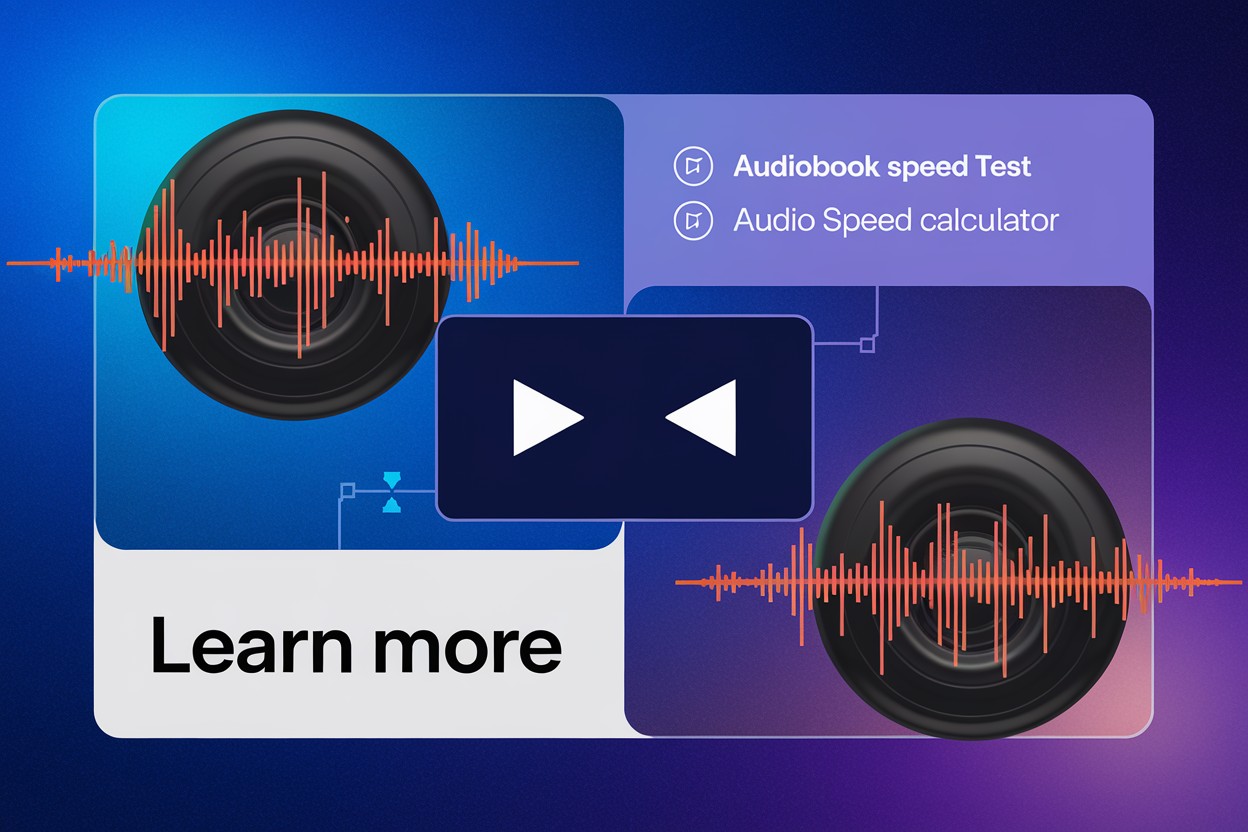Playback Speed Calculator: Improve Your Listening Experience With Custom-made Speeds
In an increasingly busy world, the capacity to personalize playback rate has come to be a necessary tool for maximizing how we involve with audio and video clip content. A playback rate calculator not only equips users to customize their listening experience however additionally improves understanding-- particularly for even more intricate topics.
Understanding Playback Speed
Playback rate is often adjusted in different media styles to improve the watching or paying attention experience. Standard playback speed is generally set at 1.0 x, suggesting that the content is seen or heard as intended by the developer.
Recognizing playback rate includes acknowledging how changes influence understanding and retention of info. For instance, increasing playback rate might enable users to consume web content extra swiftly however can result in decreased understanding, particularly in intricate topics. On the other hand, slowing down the playback can assist in comprehending elaborate details, boosting focus, and ensuring far better retention.
Different systems provide varying levels of control over playback speed, varying from 0.5 x to 2.0 x or higher. This versatility caters to varied user demands, whether for academic objectives, enjoyment, or professional growth. Thus, knowledge with playback speed is crucial for optimizing the intake of media and maximizing its possible benefits.
Benefits of Personalized Speeds
Several users discover that personalizing playback rates supplies significant advantages tailored to their private demands. Reducing down a lecture or audiobook, for circumstances, allows for deeper understanding of elaborate ideas, while speeding up much less thick web content can optimize time effectiveness.
One more benefit is enhanced involvement. Personalized playback rates aid maintain audiences' attention by lining up the speed with their personal preferences. This versatility can make taking in info a lot more satisfying, minimizing the probability of disturbance.

Furthermore, personalized speeds can be useful for language students. Slower playback can assist in pronunciation and comprehension, while quicker rates can boost listening skills and fluency. Eventually, the capacity to change playback speeds empowers individuals to take control of their discovering trip, cultivating a more effective and customized paying attention experience.
Just How to Make Use Of a Calculator
Making use of a calculator effectively can considerably improve your capability to handle playback rates and maximize your paying attention experience. To start, pick a trusted playback rate calculator, which can be located as an online device or a mobile application. These calculators typically more tips here require you to input specific parameters such as the original period of the sound or video clip, your liked playback period, and any type of extra variables appropriate to your requirements.
When you have accessed the calculator, input the total time of the content you desire to change. Next off, suggest the preferred playback speed, which may be faster or slower than the standard price. The calculator will certainly process these inputs to offer you with the adjusted playback time, allowing you to envision just how much time you can save or how much additional time might be needed.
Additionally, numerous calculators offer attributes that permit individuals to try out various rates quickly. This experimentation can aid you find optimal setups fit to different sorts of material, enhancing understanding and retention. By complying with these steps, you can properly take advantage of a playback speed calculator to customize your listening experience to your certain preferences.
Advised Speed Setups
Choosing the appropriate playback rate is important for optimizing your paying attention experience across different kinds of material (Playback Speed Calculator). Different tools and contexts call for customized speed setups to enhance understanding and engagement
For common podcasts have a peek at these guys and audiobooks, a playback speed of 1.0 x is usually suggested to make certain clearness and retention. Several listeners discover that raising the speed to 1.25 x or 1.5 x can preserve understanding while significantly lowering general listening time. This is specifically reliable for material that is primarily informative.
In the situation of educational video clips or talks, a rate of 1.5 x to 2.0 x can be useful. This permits reliable intake reference of thick product, presuming the speaker's pace is steady and clear. On the other hand, for content that depends greatly on psychological distribution or nuanced language, such as verse readings or dramatic performances, a slower speed of 0.75 x to 1.0 x is a good idea to totally value the nuances.
Inevitably, the very best playback speed varies among individuals and content types, so experimenting with different settings will assist you discover the ideal rate for your personal listening experience.
Tips for Optimal Listening
To enhance your listening experience, it is important to adjust different aspects beyond just playback speed. Initially, consider your setting; a silent room can dramatically boost acoustic clearness. Background noise can distract and lessen understanding, so select a place for concentrated listening.
Following, change the audio quality settings - Playback Speed Calculator. High-quality sound data offer a richer listening experience. If available, decide for lossless layouts or higher bitrates to preserve the subtleties of the material. Additionally, make use of earphones or speakers that match your choices; well-balanced audio can improve the listening experience.

Finally, customize your listening method to the material. For complex subjects, a slower playback rate might boost understanding, while easier material can be taken pleasure in at a quicker rate. By integrating these methods, you can enhance your listening experience, making it not only enjoyable but additionally improving.
Final Thought
